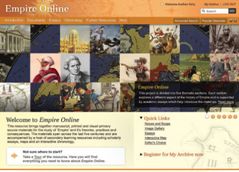Digitising source material
Digitisation is a major part of the work of primary sources publisher Adam Matthew. Philippa Hubbard explains the process involved in selecting and digitising resources

Adam Matthew, which was acquired recently by SAGE, provides primary resource collections and releases up to seven projects each year. Recent examples include Mass Observation Part III, Foreign Office Files for China, 1919-1929 and Popular Culture in Britain and America II, and the company is working on further collections for later in the year.
Our collections include archival content sourced from leading libraries, archives and museums and resources are selected to provide breadth and depth of material. Materials chosen include manuscript documents (diaries, letters, notes); printed materials (journals, rare books, reports, ephemera); photographs, drawings, paintings, postcards, video clips, video demonstrations, and audio-files (interviews, music files). We also have features that enable users to view 3D objects, such as a First World War soldier’s helmet, cigarette boxes, Victorian cameras and a child’s cardboard theatre.
As far as possible we want the digital experience of an archival document to reflect ‘lived material interaction’. We scan material as it is found in the archive and take care that post-production processes, such as cropping, do not impinge negatively on images.
Scanning rates depend on the type of material. For example, printed books take relatively little time, whereas complex manuscripts require far greater scanning time. We have to ensure all materials are scanned with the same care and attention. We do optical character recognition (OCR) on all printed material, and we also present the archival material in our resources alongside detailed metadata in order to provide users with information and context to support and guide their research. Once the material has been scanned, we use library collection catalogues and finding aids as much as possible and these provide an excellent foundation for deriving metadata. Members of our editorial team then add any further depth and detail as necessary.
We often work with rare, unique or fragile archival material, and need to ensure that we are both mindful and respectful of their conservation and preservation. Occasionally particular materials are withheld from digitisation, or scanning methods are adapted to accommodate more difficult items.
Most partners recognise, however, that digitisation is key to the future preservation and dissemination of these fragile materials. Our entire digital portfolio is also archived with Portico so that all Adam Matthew collections (past and future) will be held in perpetuity to ensure their future availability.
As educational and digital landscapes change, a key driver is to ensure that we continue using the most appropriate technologies. Recent additions to our collections include data maps and data visualisations (Global Commodities); detailed interactive chronologies (Popular Culture; Empire Online); video (Popular Culture) and audio (First World War).
Because we work within a flexible digital medium, we have the opportunity to adapt, renew and update our existing resources for customers. In 2012, for example, we re-visited one of our oldest and most established projects, Empire Online, updating and creating a more interactive interface.
We also continue an expansion into video and audio, including materials such as oral histories of veterans and those who lived through the First World War as well as video clips from the British Film Institute, which span the very earliest years of film. Such content provides our users with other important forms of documentary evidence that both enhance user experience of our resources and support research.
Philippa Hubbard is senior editor at Adam Matthew






